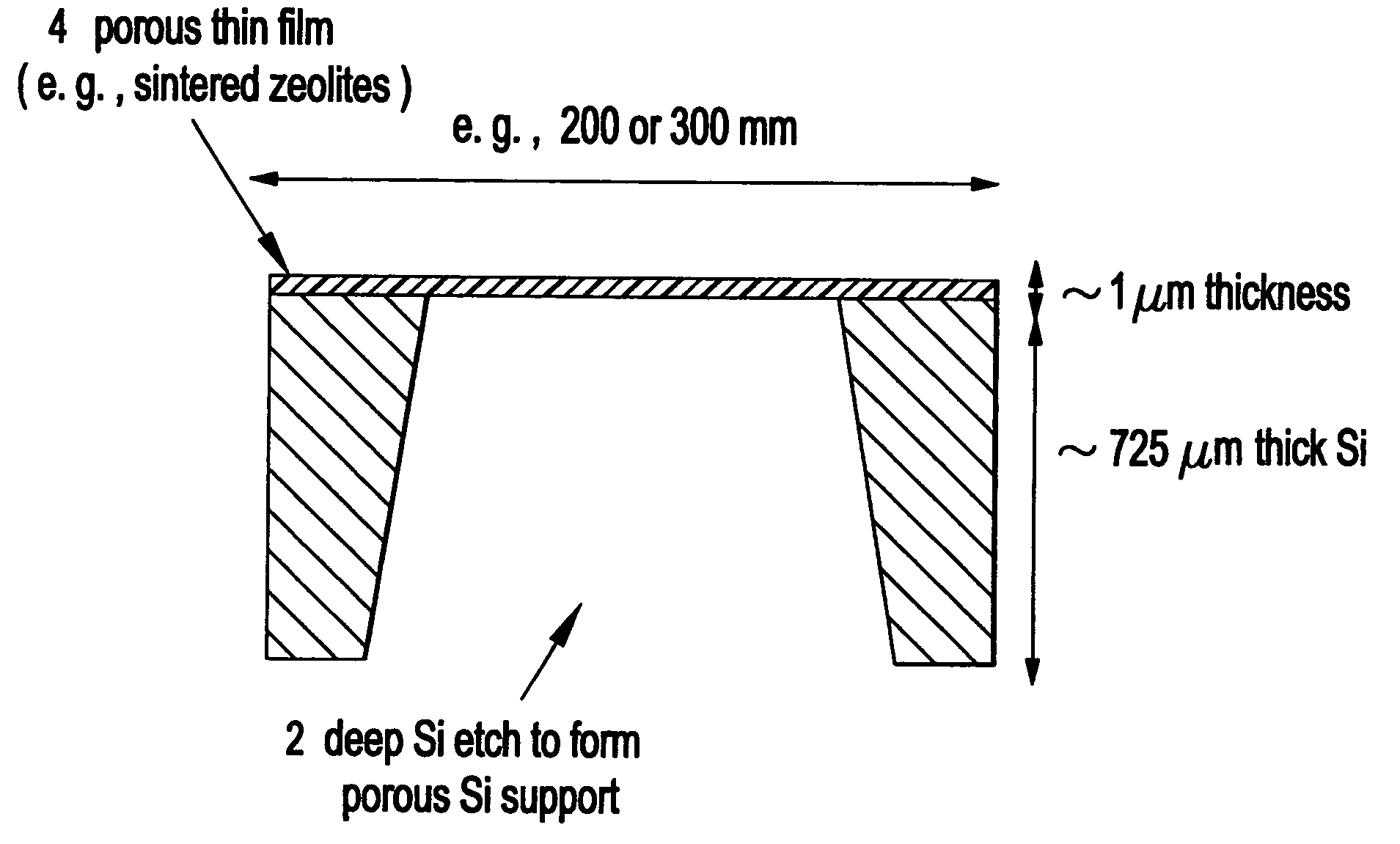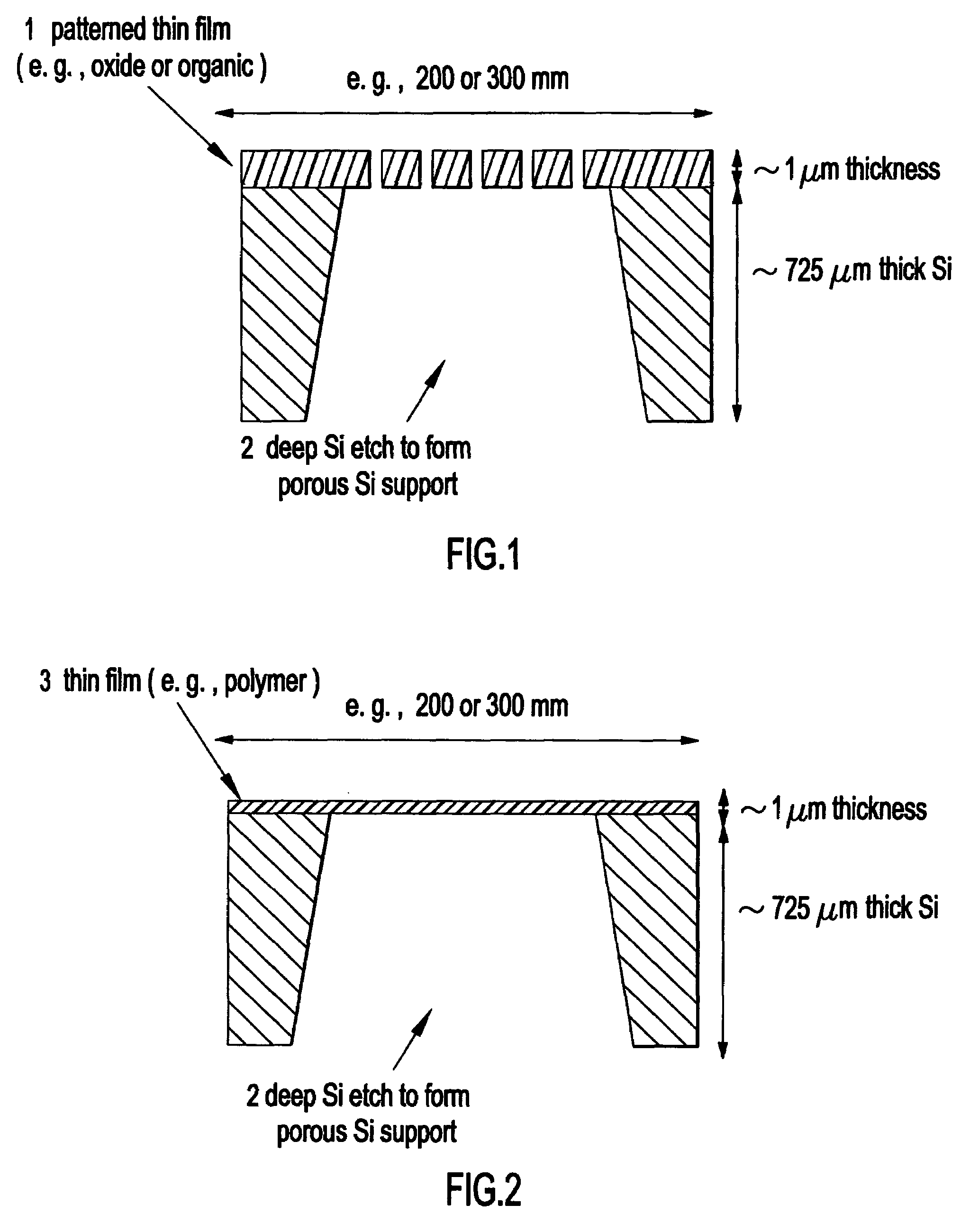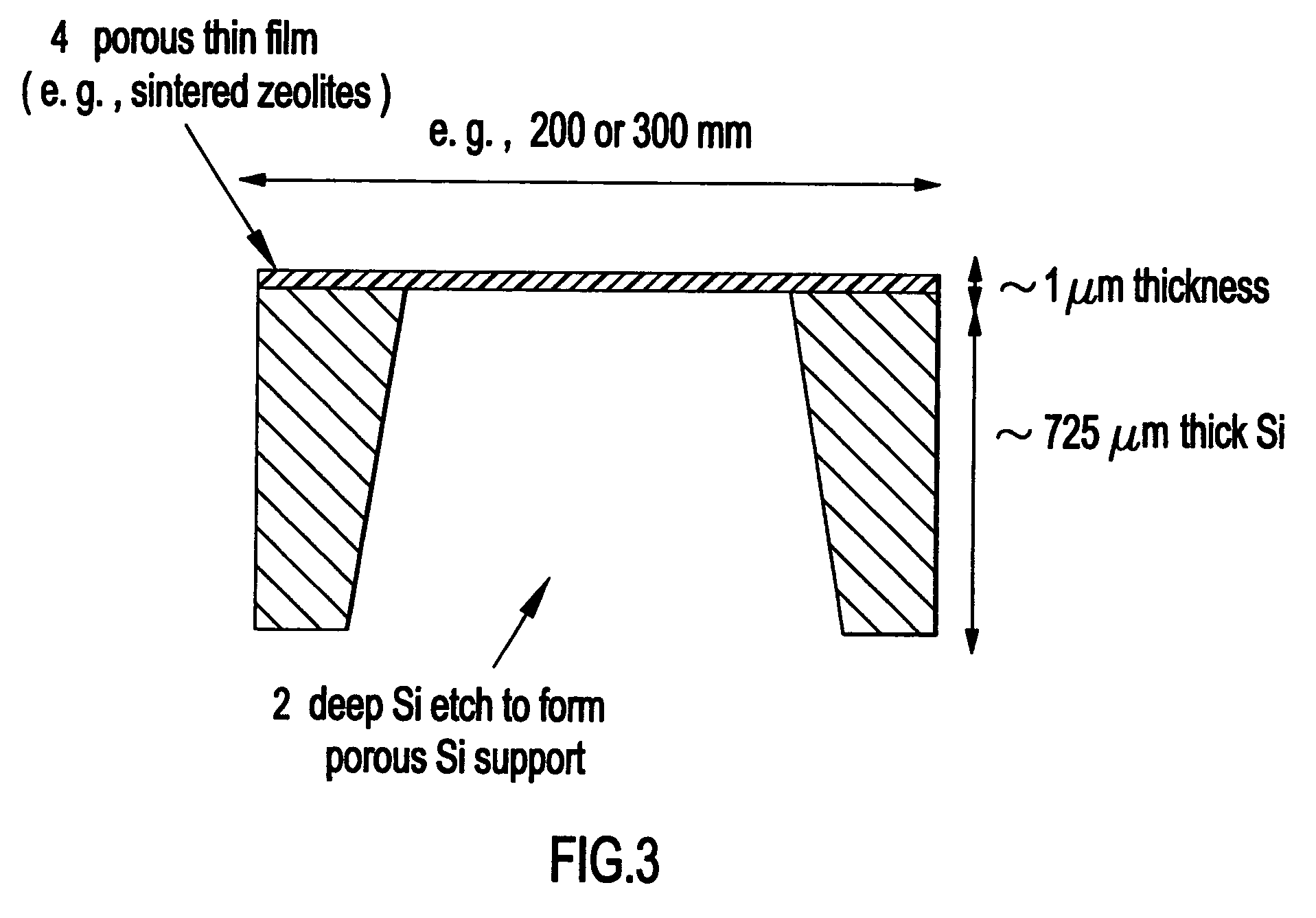Porous silicon composite structure as large filtration array
a composite structure and porous silicon technology, applied in the field of composite microfilters, can solve the problems of reducing the opportunity to introduce fouling during repair, and achieve the effects of reducing or eliminating down time due, reducing or eliminating the time of damage, and being easy to handl
- Summary
- Abstract
- Description
- Claims
- Application Information
AI Technical Summary
Benefits of technology
Problems solved by technology
Method used
Image
Examples
Embodiment Construction
[0021]The filter membrane structure shown in FIG. 1 uses a thin separation layer 1, which can be an inorganic, for example SiO2, or an organic material, that is lithographically patterned by a method known in the art to form a channel-pore structure. A channel-pore structure permits a size-selective process in which molecules larger than the diameter of the channel-pores are retained, while the smaller molecules elute. The thin separation layer 1 is deposited on a bulk crystalline silicon support membrane 2. Spin glass, such as siloxanes, silsesquioxanes, N-silsesquioxanes, and polycabosilanes also can be used to form a separation layer, as can polyimide, polysulfone, and polyethersulfone.
[0022]The silicon material comprises a wafer thickness which, as manufactured, is between about 725 and about 750 μm thick. Thin film separation layer 1 can be deposited by a number of methods known to those skilled in the art, such as chemical vapor deposition (CVD), plasma-enhanced CVD, or spin-o...
PUM
| Property | Measurement | Unit |
|---|---|---|
| thick | aaaaa | aaaaa |
| thick | aaaaa | aaaaa |
| thick | aaaaa | aaaaa |
Abstract
Description
Claims
Application Information
 Login to View More
Login to View More - R&D
- Intellectual Property
- Life Sciences
- Materials
- Tech Scout
- Unparalleled Data Quality
- Higher Quality Content
- 60% Fewer Hallucinations
Browse by: Latest US Patents, China's latest patents, Technical Efficacy Thesaurus, Application Domain, Technology Topic, Popular Technical Reports.
© 2025 PatSnap. All rights reserved.Legal|Privacy policy|Modern Slavery Act Transparency Statement|Sitemap|About US| Contact US: help@patsnap.com



